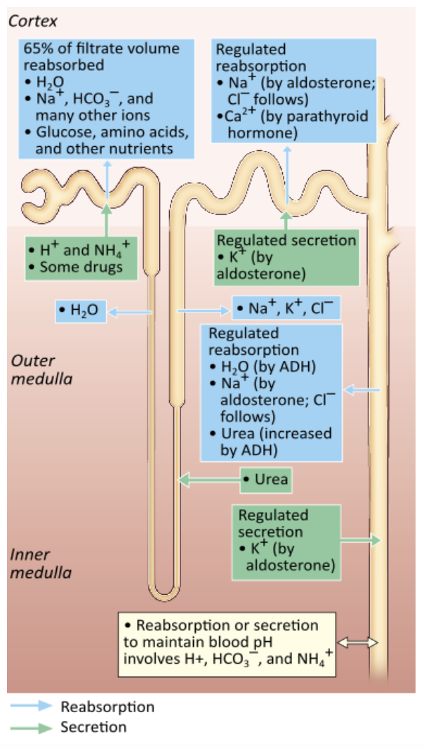
In what part of the renal tubule does parathyroid hormone (PTH) promote the reabsorption of calcium ions?
- descending limb of the nephron loop
- distal convoluted tubule (DCT)
- collecting duct
- proximal convoluted tubule (PCT)
distal convoluted tubule (DCT)
Ex.
Parathyroid hormone (PTH) promotes the reabsorption of calcium ions in the distal convoluted tubule (DCT).

What area of the nephron is responsible for the reabsorption of most of the water from the filtrate as well as most nutrients?
- collecting duct
- descending nephron loop
- distal convoluted tubule
- proximal convoluted tubule
proximal convoluted tubule
Ex.
Most of the water from the filtrate as well as most nutrients are reabsorbed in the proximal convoluted tubule.
Tubular secretion is effective in controlling blood pH.
- True
- False
True
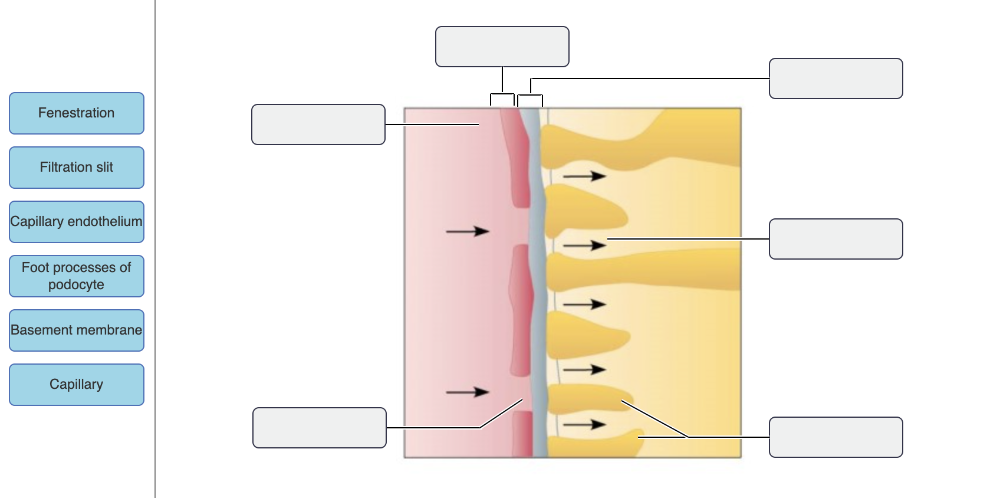
Drag the appropriate labels to their respective targets.
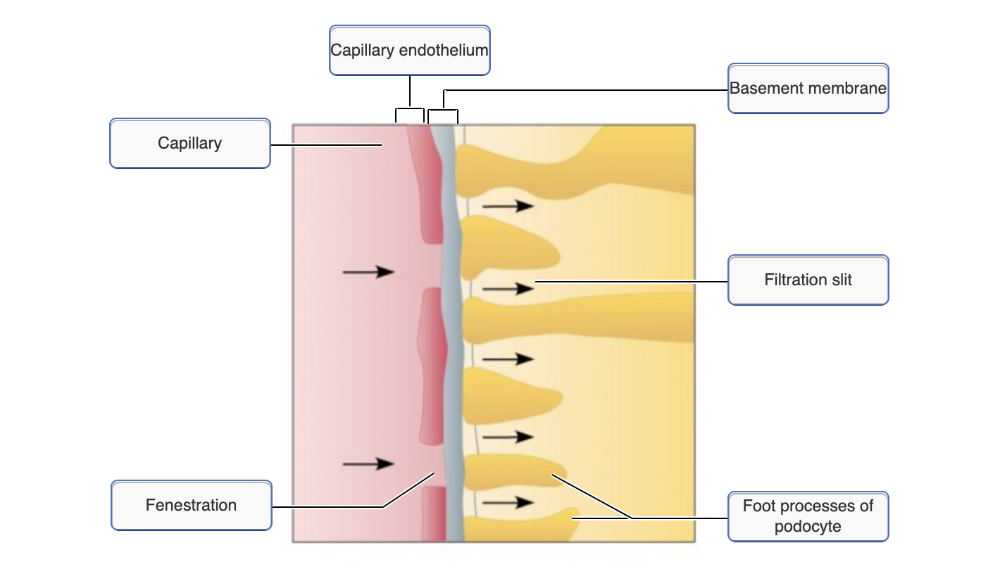

Match the following. Match the words in the left column to the appropriate blanks in the sentences on the right. Make certain each sentence is complete before submitting your answer.
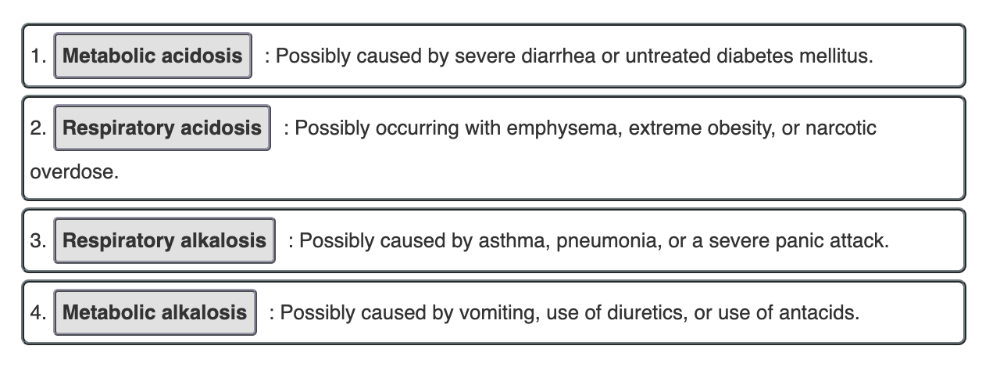
An increase in the permeability of the cells of the collecting tubule to water is due to a(n) ________.
- increase in the production of ADH
- decrease in the concentration of the blood plasma
- increase in the production of aldosterone
- decrease in the production of ADH
increase in the production of ADH
The ascending limb of the loop of Henle is permeable to water.
- True
- False
False
Ex.
The countercurrent multiplier functions because of two factors: (1) the descending limb of the loop of Henle is relatively impermeable to solutes and freely permeable to water, and (2) the ascending limb is permeable to solutes but not to water.
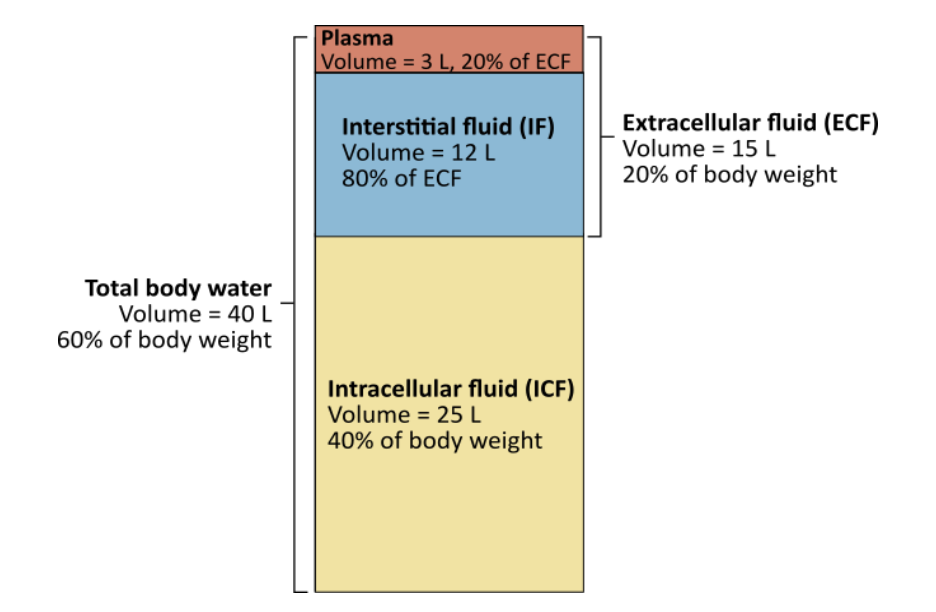
If the osmotic pressure of the blood were increased above normal levels, which of the following volumes would also increase?
- intracellular fluid volume
- total body water
- interstitial fluid volume
- blood volume
blood volume
Ex.
The higher osmotic pressure in the blood would draw water from the interstitial fluid, resulting in a higher blood volume and increased blood hydrostatic pressure.
Excretion of dilute urine requires ________.
- the presence of ADH
- impermeability of the collecting tubule to water
- transport of sodium and chloride ions out of the descending nephron loop
- relative permeability of the distal tubule to water
impermeability of the collecting tubule to water
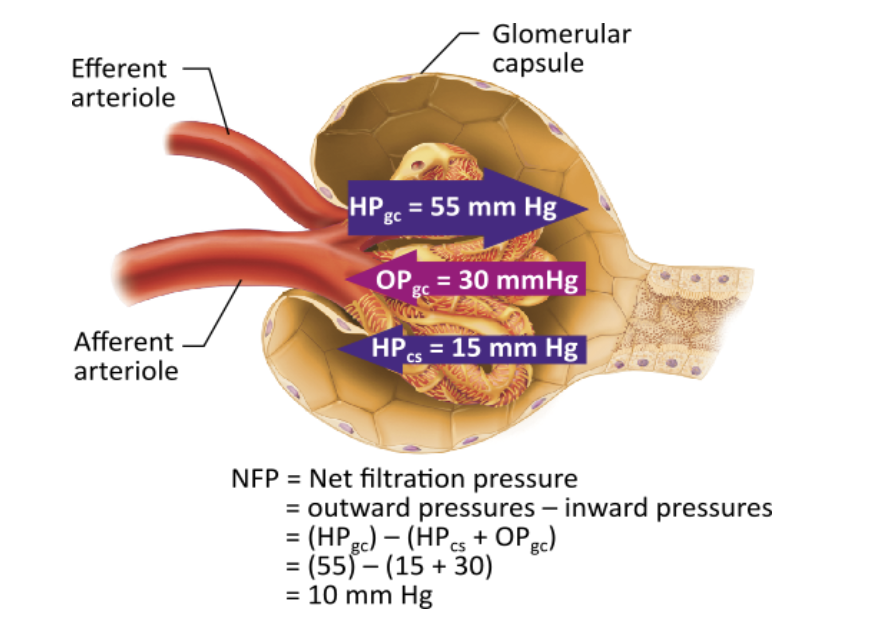
What is the chief force pushing water and solutes out of the blood and across the filtration membrane of the glomerulus?
- hydrostatic pressure in glomerular capillaries (HPgc)
- colloid osmotic pressure in glomerular capillaries (OPgc)
- colloid osmotic pressure in the capsular space
- hydrostatic pressure in the capsular space (HPcs)
hydrostatic pressure in glomerular capillaries (HPgc)
Ex.
While diffusion rates are affected more by osmotic differences and concentration gradients, hydrostatic pressure in glomerular capillaries (HPgc) is the chief method of forcing water and solutes by filtration.
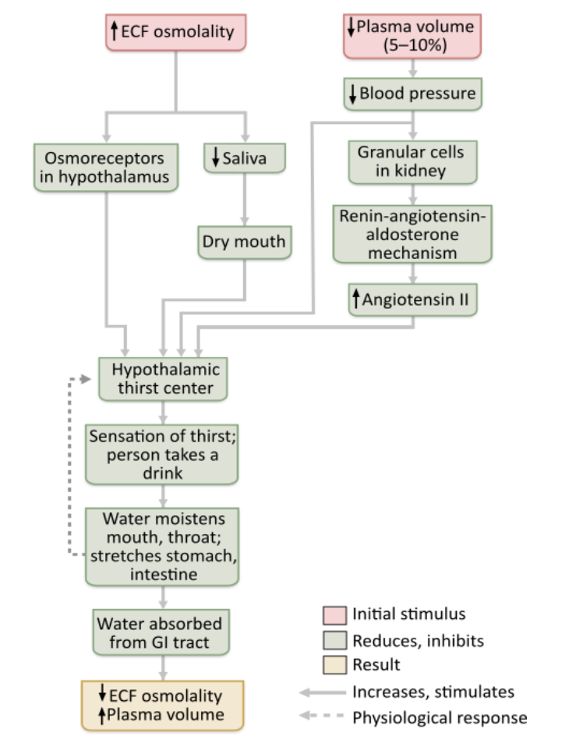
Which of the following is NOT involved in triggering the thirst mechanism?
- decrease in blood volume
- dry mouth
- detection of increased osmolality by osmoreceptors
- increase in blood pressure
increase in blood pressure
Ex.
An increase in blood pressure would lead to a drop in the hormones and responses that would, in turn, trigger the thirst mechanism.
The collecting duct is impermeable to water in the presence of ADH.
- True
- False
False
An increase in blood CO2 levels leads to __________.
- a drop in blood pH
- a decreased respiratory rate
- a decrease in carbonic acid
- an increase in blood pH
a drop in blood pH
Ex.
An increase in CO2 results in the formation of more carbonic acid, which leads to an increase in acidity, or a drop in pH.
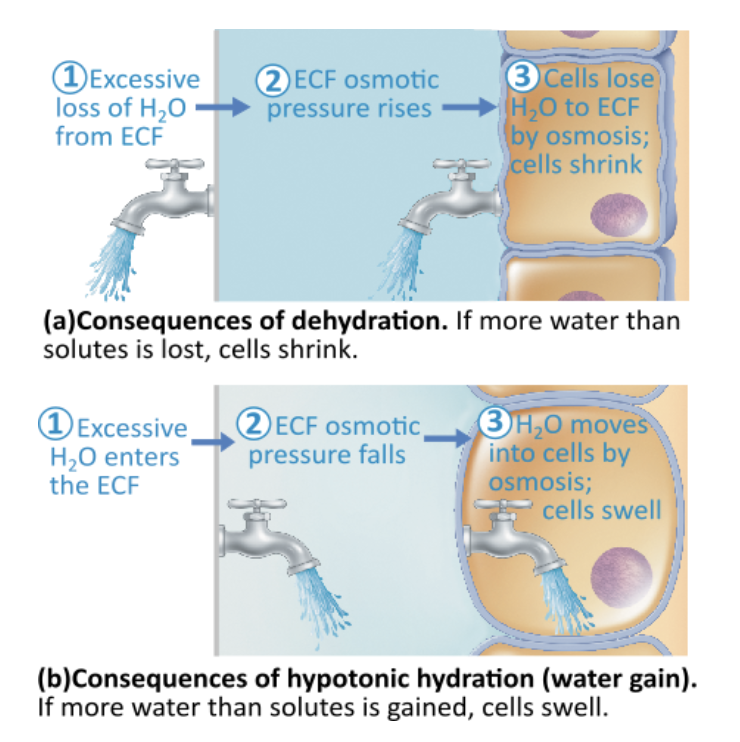
Which of the following would NOT be expected to occur as a result of dehydration?
- reduced urine flow
- hypovolemic shock
- edema
- shrinkage of body cells
edema
Ex.
Edema is tissue swelling that results from an atypical accumulation of fluid in the interstitial space. During dehydration, this fluid would be reduced.